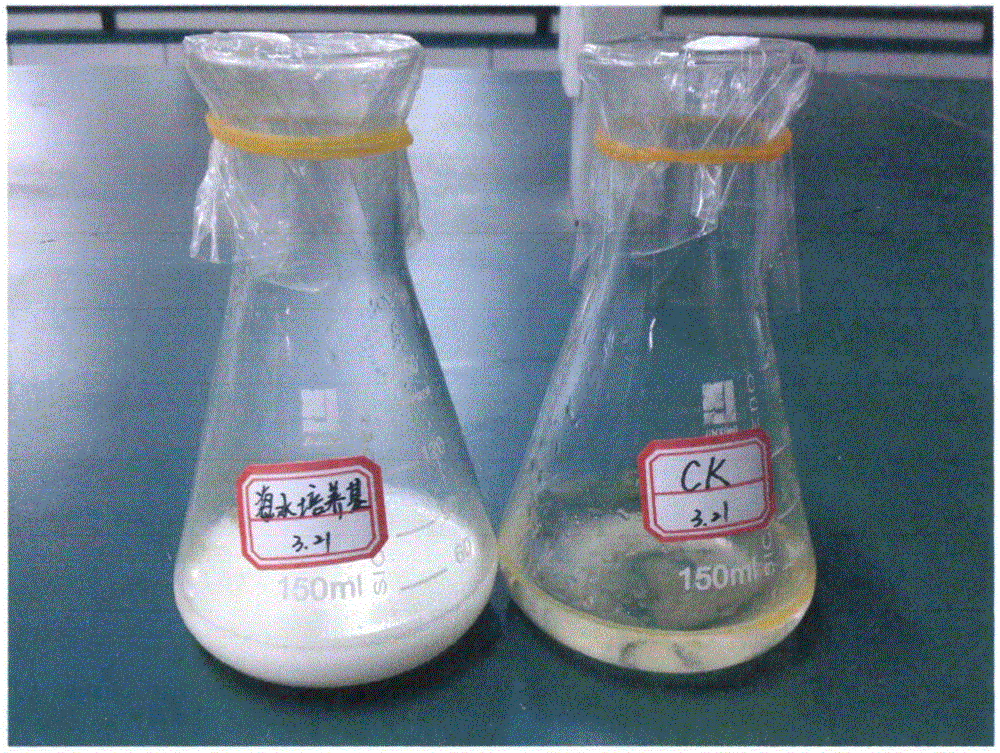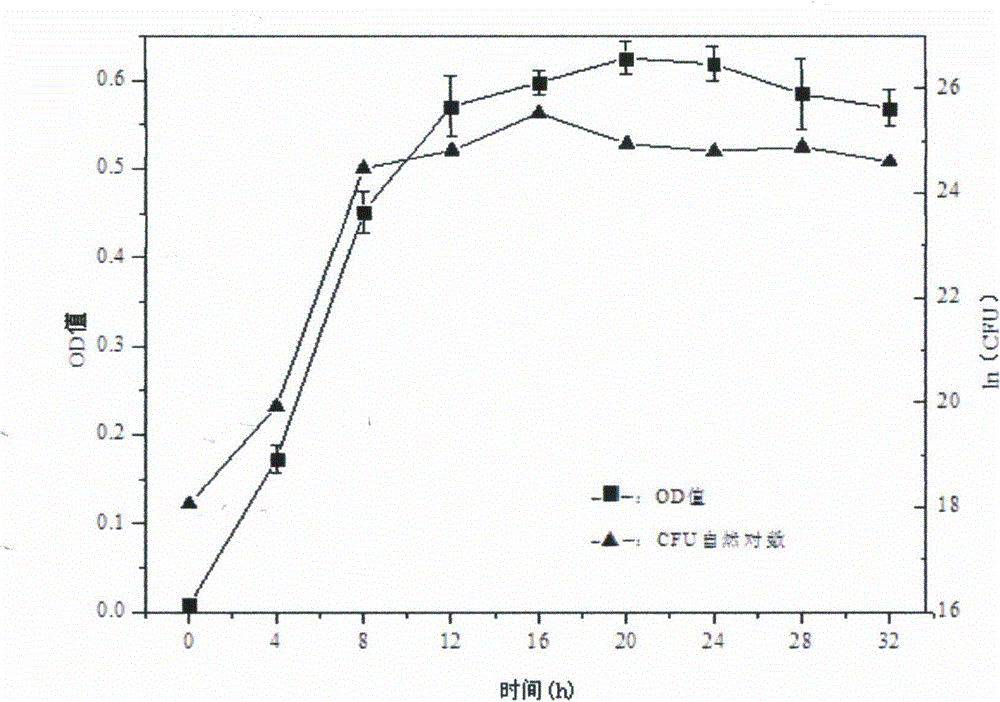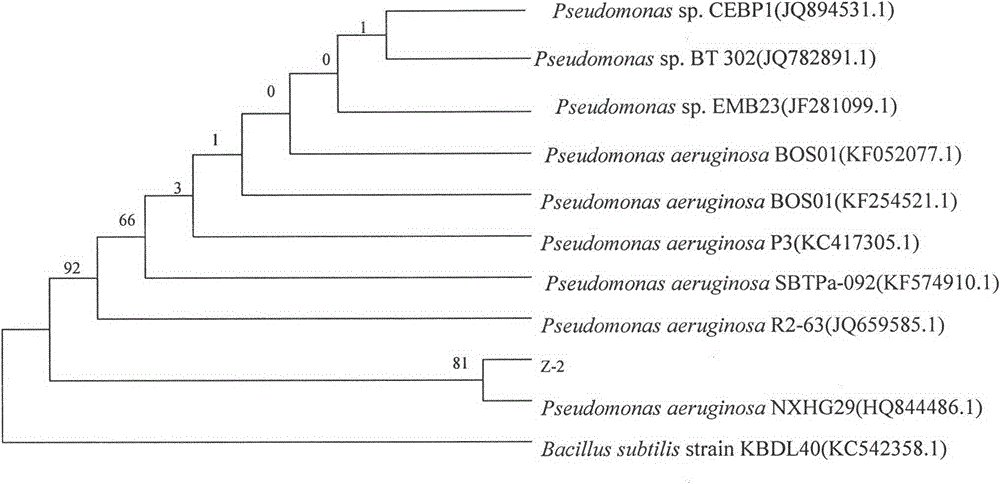A Novel Seawater Fermentation Strain Producing Biosurfactant
A surfactant, fermentation-type technology, applied in the field of fermentation engineering, can solve the problems of high desalination cost, environmental pollution, and health hazards.
- Summary
- Abstract
- Description
- Claims
- Application Information
AI Technical Summary
Problems solved by technology
Method used
Image
Examples
Embodiment 1
[0019] Embodiment 1: Screening and isolation steps of novel biosurfactant seawater fermentation strains
[0020] (1) Sampling
[0021] The following samples are mainly collected: Soil or mud samples are collected from coastal tidal flats. Water samples were collected from offshore seawater near the port. Bring back immediately after collection and store at 4°C.
[0022] (2) Enrichment culture
[0023] Add soil samples or mud samples to shake flasks with seawater fermentation medium, shake culture at 30°C for 3 days, then transfer to new seawater fermentation medium, enrich and cultivate for 3 times, so that waste edible oil can be used as the only Carbon source microorganisms are enriched.
[0024] (3) Primary screening
[0025] Take the enrichment solution in (2) and streak or dilute the culture on the high-salt blood plate, pick a single colony with a large and clear transparent circle and connect it to the slope at 30°C for 1-2 days, then store it at 4°C for later use....
Embodiment 2
[0036] Embodiment 2: Identification of seawater fermentation strain Z-2
[0037] The physiological and biochemical identification and 16S rDNA molecular identification of the seawater fermenting strain Z-2 were carried out, and the species of the seawater fermenting strain was determined by combining the morphological characteristics and physiological and biochemical characteristics of the bacteria.
[0038] (1) Cell morphology, physiological and biochemical characteristics of seawater fermentation strain Z-2
[0039] According to the "Common Bacterial System Identification Handbook", including morphological microscopy, spore production, Gram staining, pyocyanin, indole production, nitrate reduction, glucose oxidative fermentation, catalase, gelatin liquefaction, starch hydrolysis, Citrate, methyl red, acetyl methyl carbinol (V-P), malonate and other experiments. Determination result is as follows table 1:
[0040] Table 1 Cell morphology and physiological and biochemical ch...
Embodiment 3
[0048] Embodiment 3: Determination of seawater fermentation strain Z-2
[0049] The 16SrDNA sequencing result of the strain was compared with the sequence in GenBank, and compared with BLAST, it had a high homology with Pseudomonas sp. Retrieve relevant 16SrDNA sequences from GenBank, use software such as ClustalX and Mega5 for phylogenetic analysis, and use neighbor-joining method to construct phylogenetic tree ( image 3 ). Based on the results of physiological and biochemical experiments (Table 1) and molecular identification and cluster analysis of this strain, it can be determined that the seawater fermentation strain Z-2 is Pseudomonas aeruginosa. Its classification is named Pseudomonas aeruginosa (pseudomonas aeruginosa), and it has been preserved in the General Microbiology Center of the China Committee for the Collection of Microbial Cultures (Address: Institute of Microbiology, Chinese Academy of Sciences, No. 1, Beichen West Road, Chaoyang District, Beijing), The ...
PUM
 Login to View More
Login to View More Abstract
Description
Claims
Application Information
 Login to View More
Login to View More - R&D
- Intellectual Property
- Life Sciences
- Materials
- Tech Scout
- Unparalleled Data Quality
- Higher Quality Content
- 60% Fewer Hallucinations
Browse by: Latest US Patents, China's latest patents, Technical Efficacy Thesaurus, Application Domain, Technology Topic, Popular Technical Reports.
© 2025 PatSnap. All rights reserved.Legal|Privacy policy|Modern Slavery Act Transparency Statement|Sitemap|About US| Contact US: help@patsnap.com



